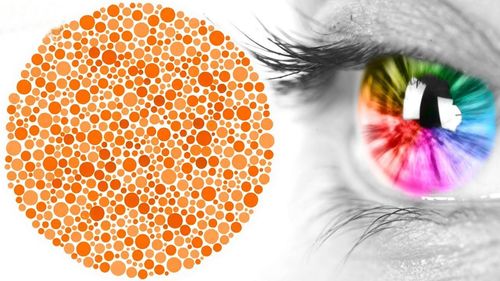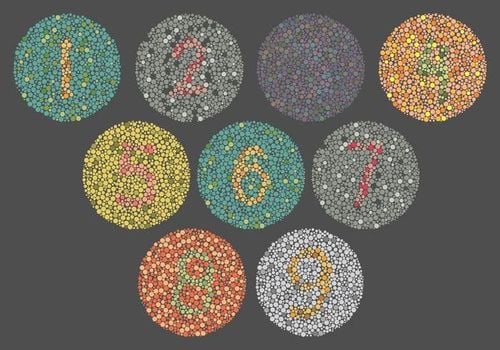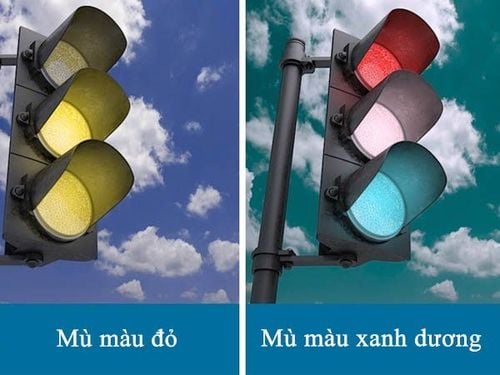This is an automatically translated article.
From an early age children start to learn a lot from their surroundings from pictures, sounds and smells... this helps develop their senses and helps them learn about everything in the world around. However, in some children, only 1 or 2 primary colors can be recognized, or even the child does not. So how to teach children who are slow to recognize colors?
1. When do children start seeing colors?
Babies begin to see more colors between 2-4 months. At first, children will begin to distinguish different shades of red and green. The time it takes for a child to distinguish between different colors varies from child to child. Therefore, there will be no common timeline for this development. Parents can encourage their child's development by giving them toys with different colored blocks. In particular, children may be interested in rainbow colors such as orange, yellow, red, green, blue.
How many months do babies recognize colors? By the time your baby is 5 months old, he or she can already see most colors. However, children will be limited and cannot see vivid colors like adults, but at this time their eyesight also develops strongly, specifically:
Distinguishing shallow and deep sensations Body coordination and eyes Synchronized eye coordination However, it is still very difficult for parents to recognize that children are slow to recognize colors at this age. Because children's communication skills are not perfect. The skill that children develop the most at this time is the skill of using their hands. It is not until children begin to speak and use words to describe color recognition that parents will definitely know that children can distinguish colors. Usually from 3 years old is the age when children start kindergarten to be able to name colors, until 3 and a half to 4 years old, children recognize and distinguish more colors.
Watch now: Children can't distinguish colors and remember when they learn, what should they do?

Cho trẻ chơi tô tượng và gọi tên màu vẽ khi trẻ chậm nhận biết màu sắc
2. How to teach children when they are slow to recognize colors
Children recognize colors earlier than children of the same age, when growing up often have a keen observation mind and rich emotional life. If parents teach children about colors earlier than the child's age and cognitive ability, the child cannot name the right color. However, it is also not advisable to wait until children are old enough to teach them to recognize colors. Because this will not encourage children to observe and develop their senses, which reduces the ability to be sensitive and delicate.
The best method of teaching children to recognize colors is to use toys around them every day to teach them. For example, a mother says: "Your white shirt is dirty" or "Give me that red ball",... In everyday life, children are seen and interacted with a lot of people. Many objects have a variety of colors, these are good opportunities for children to recognize not only the color but also the characteristic properties of the object. Parents should know how to make the most of the time they are near their children to teach their children to recognize colors on a regular basis, to name and compare objects of different colors so that children can easily recognize and remember them longer.
In addition, coloring lessons are also very useful, when children have memorized the color of objects, children will practice, directly paint or draw that color on objects in books. However, at first, parents should teach children basic colors such as blue, red, yellow, and black, then distinguish more carefully such as blue, green, blue, brown, pink , orange, ... because these tones are more difficult to distinguish for children.
Different games that parents can apply in teaching children to distinguish colors such as:
Let children play picking objects of the same color into each box from different colored toys. Quiz game: give the child a toy that is blue and ask the child to also find another toy of the same color in the room and name the color. Play a game with your child to see who can find the most toys of the same color. Play coloring according to the pattern of objects such as flowers, trees, fish, etc. Let the children play with pictures and name the colors. Let the children play with clay, different things with different colors. Playing with ribbons of different colors Depending on the actual situation in the family's life, what types of toys are available, parents can teach children to recognize colors according to that toy. Everyday items should also be used such as clothes, shoes, socks, bags, backpacks, ... to increase the attractiveness and encourage children's observation.
In short, from a young age, children begin to learn a lot from their surroundings from images, sounds and smells,... this helps develop their senses and helps them learn about everything. things in the world around. Babies begin to recognize colors at 2 months of age. However, at this stage, it is very difficult for parents to know that children are slow to recognize colors because children can't talk until they start kindergarten. When children are slow to recognize colors, parents should not be too worried, but calmly find ways to teach children. However, after a while, if the child still does not absorb and is not effective, take the child to a medical facility to distinguish it from other diseases such as color blindness and advise on how to teach the child to recognize the right colors. fit.
For more nutritional knowledge and child care for each age, parents should regularly visit the website vimec.com and make an appointment with the leading doctors, pediatric and nutrition experts of the National General Hospital. Vinmec when needing advice on children's health.
Please dial HOTLINE for more information or register for an appointment HERE. Download MyVinmec app to make appointments faster and to manage your bookings easily.













